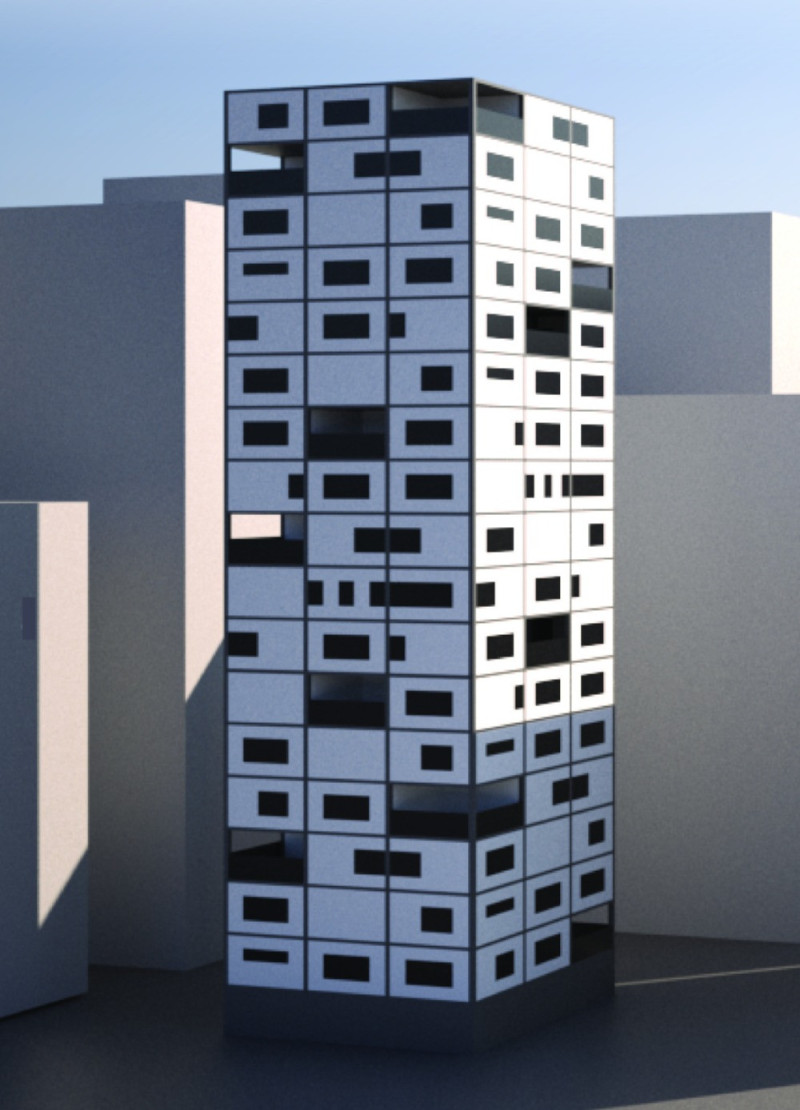5 key facts about this project
The modular housing project addresses the need for efficient living solutions in an urban setting. Designed to accommodate various residents—including families, couples, and singles—it employs a grid system that maximizes space throughout each level. The approach responds to increasing housing demands while ensuring that each unit functions well for daily life.
Modular Units
At the heart of the concept are modular units organized in a clear grid layout. The floor plan divides into eight squares that create a logical flow. Central to this design are the stairwells and lift shafts, positioned to streamline movement. This thoughtful arrangement enhances accessibility and improves overall functionality for all users.
Panel System
A distinctive aspect of the project is the panel system that surrounds the living areas. These panels are divided into four vertical sections and five horizontal sections, allowing for flexible window placements that respond to different needs. This adaptability offers visual variety while ensuring structural soundness. Moreover, the prefabricated nature of the panels simplifies construction, lowering both costs and time required on-site.
Integration of Balconies
Balconies are another important feature of the design. By incorporating these outdoor spaces within the grid layout, the project enhances livability. Residents benefit from private areas to relax outside, promoting a connection to the environment. This design choice fosters an active lifestyle and contributes positively to well-being.
Visual Representation
Rendered images in the design proposal showcase how the panels and windows come together to create inviting interiors. These illustrations help to clarify the architectural vision and depict the atmosphere of the living spaces. Each visual element illustrates how practical living meets aesthetic values, urging residents to engage comfortably with their surroundings.
The facade presents a rhythmic pattern of solid and open spaces, creating visual interest while supporting a sense of community. This approach encapsulates a modern vision of urban living that prioritizes usability and comfort for everyone.



















































